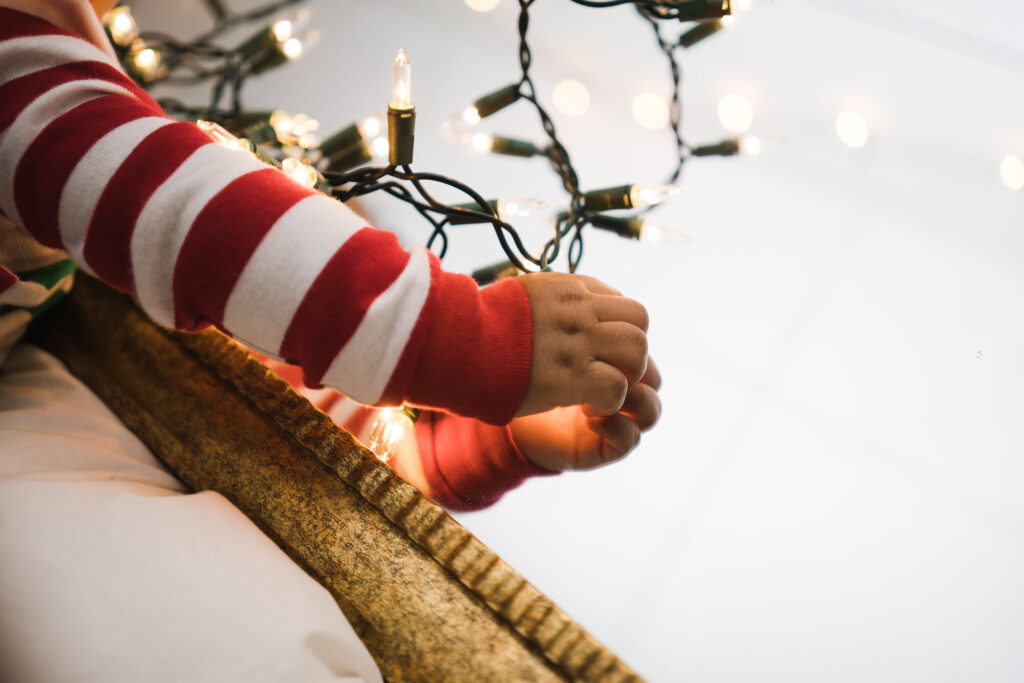How Strings of Christmas Lights Are Made

Though millions of Christmas tree lights are manufactured and sold in the United States every year, most buyers don’t know the basics behind how they’re made. What many people see as pretty glowing lights on a festive cord are actually highly complex products that require careful formation, shaping and assembly.
Raw Materials
Two primary sets of materials go into making string Christmas lights. The strings contain 22-gauge copper wire coated in green or white rubber or polyvinyl chloride (PVC) with injection-molded plastic plugs at each end of the strands. Christmas tree lightbulbs require a separate set of materials, including blown glass, rubber bases, metal contact wires and filaments.
Mold release agents play a vital role in manufacturing many of these materials — namely, all components made of plastic or rubber. These chemicals provide a barrier between substrates and their molding surfaces, preventing them from bonding while being shaped. Mold release agents ensure that all of the string’s plastic and rubber bases, cords and tips are successfully shaped without fusing to their molds.
Wire Strings
The first step in manufacturing Christmas lights is creating the wire strings. This process involves:
- Wire coating: The manufacturer coats the copper wire in PVC or rubber to protect it from harsh temperatures and ultraviolet (UV) rays, equipping the string Christmas lights for use in any climate.
- First wire construction: This wire is cut to the complete length of the light strand before a molded load fitting or plug is fashioned to one end of the wire and an end connector to the other.
- Second wire construction: The second length of wire is assembled in shorter, 6-inch segments with lamp holders linking each pair. Workers manually funnel the wires through a machine, which trims the plastic and contact-welds a flange or copper metal contact to the wire end.
- Lamp holder fitting: Next, the workers fit the end of the wire with the metal flange to the lamp holder by pushing it into place until the flange snaps in. They then attach another wire to the other side of the lamp holder with the stripped end driven into it. The manufacturer repeats this process, connecting numerous wires.
- Wire pairing: Once all wire segments are linked, they are paired with a continuous wire and fitted to a wall plug and end connectors. A machine then twists the two strings together.
Lightbulbs
Lightbulbs for Christmas tree lights are manufactured independently following a separate process:
- Bulb shaping: Glass units vibrate into slots on a rounded table with numerous operating stations positioned around it. As the table rotates, the glass moves through the stations and is heated and blown into a bulb shape.
- Filament placement: Manufacturers place filaments and other components within the bulbs, enabling them to produce light.
- Glass sealing: The glass is pinched down, and a vacuum removes the oxygen from the hot bulbs before the ends are sealed. Then, two wires are pressed into the glass.
- Bulb painting: To color the bulbs, magnets pull them up by their wires and move them through a tunnel where they are painted and left to dry.
- Assembly: The lightbulbs move through an assembly line where workers fit them with injection-molded plastic bases. The workers attach the bulbs’ wires to the plastic bases, bending them at the sides so that they touch the metal flanges and lamp holders.
Purchase Reliable Mold Release Agents for String Christmas Light Manufacturing at W.N. Shaw
Outdoor Christmas decoration manufacturers looking to preserve their plastic and rubber components should come to W.N. Shaw for high-quality mold release agents. With over a century of industry experience, we’re the experts you can trust.
Contact us to learn more about our mold release agents and applications today.
